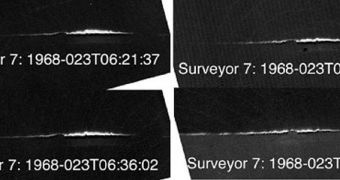The Earth's natural satellite is one of the most pristine places in the Universe to study, in spite of being dotted with all types of wrecks belonging to various lunar missions. Its atmosphere is especially suited for measurements, as it always remains completely still, other than the rare instances in which an incoming asteroid hits the surface. This stillness offers astronomers a unique opportunity to study the Moon, and the future Lunar Atmosphere and Dust Environment Explorer (LADEE) mission aims at doing just that, PhysOrg reports.
It is absolutely crucial, mission planners say, to launch the new mission before humans return to the Moon. At this point, the lunar atmosphere is still and undisturbed, with no gases or dust being kicked up in the skies. Only trace amounts of dust can exist in the body's atmosphere, seeing how the Moon has only one sixth of the Earth's gravitational pull. “It's important that we understand it in its pristine state before there's much perturbation. It's such a fragile system. It's possible that it will be hard to study once humans are once more living and working on the Moon,” NASA Ames Research Center expert Anthony Colaprete says.
As humans return to the satellite, they will start stirring up dust and emitting various types of gases that could easily disrupt the very fragile mixture of gas that makes up the lunar atmosphere. There are numerous things that are extremely curios about the formation, which, by all accounts and purposes, is not technically an atmosphere, because it does not have enough density. Rather, its is considered to be an exosphere. A cubic centimeter of the Earth's atmosphere at sea level contains about 100 billion molecules, astronomers know, but a similar quantity of the Moon exosphere contains only 100 molecules.
This difference essentially means that the particles making up the lunar exosphere do not interact with each other as the molecules in the Earth's atmosphere do, but rather flow past each other indefinitely. Another peculiarity is that all these molecules fall to the ground at sunset, which means that solar winds hitting the Moon the next day need to kick up sufficient molecules to replenish it. The radiation also kicks up electrons from substances in the regolith – lunar soil – that, in turn, produce electrical fields. It will be up to LADEE to determine how these processes work and influence each other.

 14 DAY TRIAL //
14 DAY TRIAL //